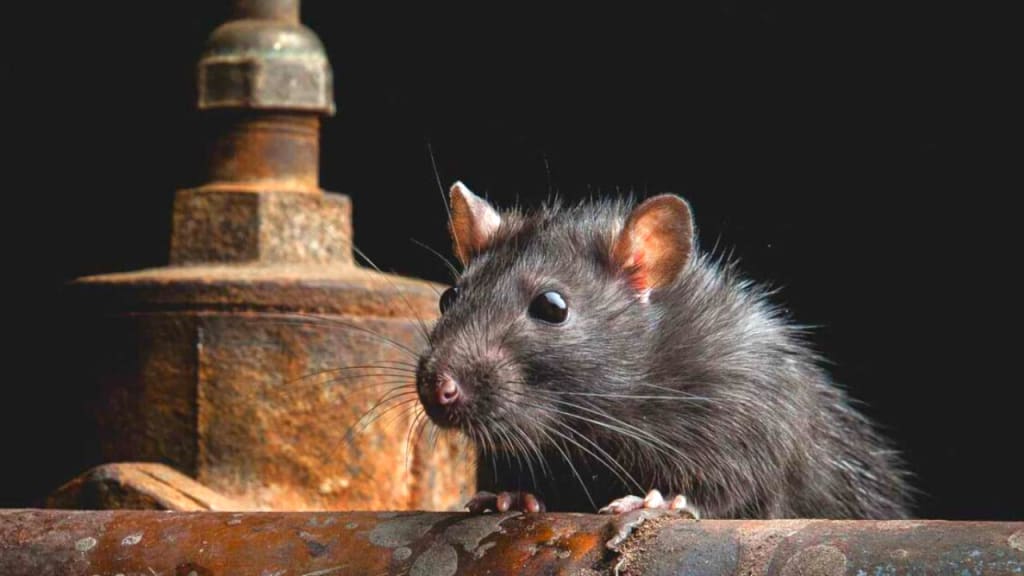Rats Dangers: What Diseases Do Rats Carry?
Learn how dangerous rodents infestations can be and why is important to control them.

There's something oddly alluring about rats. They are one of the most commonly studied animals in the world, and yet they still hold a certain mystique. Despite their cute face and small size, rats can carry some pretty dangerous diseases.
In this post, we'll take a look at some of the most common rat-borne diseases, and what you can do to protect yourself from them. Read on to learn more!
How Do Rats Spread Diseases?
It's no secret that rats and other rodents are some of the most disease-ridden creatures on the planet.
They're vectors for a host of pathogens, and their droppings can be found in all sorts of unlikely places. Even if you don't live in an area with a high rodent population, it's important to be aware of the risks associated with these creatures.
Here are some of the ways you can come into contact with disease-carrying rodents:

-Touching them (alive or dead)
-Coming into contact with their urine, feces, or saliva
-Rat bites
-Bites from fleas, ticks, and other insects that have fed on a disease-carrying rodent
As you can see, there are plenty of ways to contract a disease from these pests. This is just one more reason to act immediately and take action in order to get rid of rats as soon as you notice their presence on your property.
What Diseases Do Rats Carry?
Hantavirus
Hantavirus may not be the first thing that comes to mind when you think of rodents, but it is one of the most common diseases spread by these furry little creatures. Hantavirus is a serious respiratory disease that can be deadly if left untreated.
The virus is typically spread through contact with rodent feces or urine, and it can also be spread through biting or scratching from an infected rodent.
Symptoms of hantavirus include fever, headache, and muscle aches, and the virus can progress to pneumonia and kidney failure. There is no specific cure for hantavirus, but early diagnosis and treatment are essential for the best possible outcome.
Salmonella
Salmonella is a type of bacteria that can cause food poisoning. It is often spread through contaminated food, such as raw chicken or eggs. Rodents can also spread salmonella, as they may carry the bacteria in their fur.
If a rodent comes into contact with food, it can contaminate it with salmonella. This can happen if a rat or mouse crawling through a garbage can contaminates the food inside with its fur or feces. In some cases, rodents may also urinate on food, which can also spread salmonella.
Sanitation is key to preventing the spread of salmonella. Keeping food clean and cooked properly can help to prevent contamination. In addition, it is important to clean up any rodent droppings that may be present in your home or business.
Regularly cleaning and disinfecting surfaces can also help to reduce the risk of salmonella growth and spread.

Tuberculosis
Tuberculosis is a serious infectious disease that primarily affects the lungs. It is caused by the bacteria Mycobacterium tuberculosis, and it is typically spread through coughing or sneezing.
According to the Centers for Disease Control and Prevention, tuberculosis is one of the leading causes of death worldwide, and it is particularly prevalent in developing countries. Rodents are known to be carriers of the disease, and they can spread it to humans through close contact or by contaminating food or water supplies.
In recent years, there has been a significant increase in the number of tuberculosis cases in developed countries, largely due to increased travel and immigration from regions where the disease is more common.
While treatment for tuberculosis is available, it can be expensive and difficult to access in some parts of the world. As a result, it is important to take measures to prevent the spread of the disease, such as vaccinating against it and limiting exposure to rodents.
Listeria
Listeria is a serious foodborne illness that can be deadly. It is caused by the bacterium Listeria monocytogenes, which is found in soil and contaminated water. The bacterium can spread to food, where it can grow and multiply.
Listeria is particularly dangerous because it can survive in cold temperatures and can thrive in refrigerated or frozen food. This makes it one of the most common foodborne illnesses in the United States.
Each year, there are an estimated 1,600 cases of listeriosis, with 260 of them proving fatal. The majority of cases occur in pregnant women, newborns, and people with weakened immune systems.
However, anyone can become sick from eating contaminated food. Symptoms of listeriosis include fever, muscle aches, nausea, and diarrhea. If you experience any of these symptoms, seek medical attention immediately.
Listeria is a serious illness that should not be taken lightly. Taking precautions to avoid contamination and knowing the symptoms can help to keep you and your family safe.
E. Coli
E. coli is a type of bacteria that can cause food poisoning. While most strains of E. coli are harmless, some can produce toxins that can lead to severe illness. One of the most serious types of E. coli is O157:H7, which can cause bloody diarrhea and kidney failure.
The bacteria are typically spread through contaminated food, water, or contact with animals or people who are infected. Rodents are one of the most common sources of E. coli contamination.
The bacteria can live in their intestines and be passed in their feces. When rodents contaminate food or surfaces with their feces, it can cause an outbreak of food poisoning. In severe cases, E. coli infection can be deadly.
Toxoplasma gondii
Toxoplasma gondii is a widespread parasite that can infect all warm-blooded animals, including humans. One of the most common ways that people become infected with toxoplasmosis is through contact with infected rodents.
T. gondii is spread via contaminated food or water, and it can also be transmitted through contact with infected animal feces. The parasite infects the rodents' intestinal tracts and then forms cysts in their brains.
This change in behavior makes the rodents more likely to be eaten by predators, which allows the parasite to complete its lifecycle and continue to spread. As a result, T. gondii is a major public health concern, and efforts should be made to control the spread of this disease.

Cryptosporidiosis
Cryptosporidiosis is a 26% rodent spread disease that affects humans and other animals. It is caused by the Cryptosporidium parasite, which is found in contaminated food or water. The parasite is resistant to chlorination, so it can often be found in public water supplies.
Symptoms of the disease include diarrhea, vomiting, and abdominal cramps. The disease is usually self-limiting, but it can be deadly in people with weakened immune systems. Rodents are thought to be the main source of the parasite, so it is important to control their populations.
To prevent the spread of cryptosporidiosis, people should practice good hygiene and avoid consuming contaminated food or water. Treatment of the disease usually focuses on relieving symptoms and preventing dehydration.
In severe cases, antidiarrheal drugs may be necessary. In most cases, however, cryptosporidiosis can be effectively managed with proper education and prevention.
Foot and mouth disease
Foot and mouth disease is highly contagious among ungulates - animals with hoofs - and can cause severe economic losses in the livestock industry. The virus that causes the disease is spread through contact with contaminated saliva, milk, or meat, and can easily infect rodents who come into contact with these products.
Once infected, rodents can spread the virus to other animals through their bodily fluids, contaminated fur, or even their feces. As a result, foot and mouth disease outbreaks can often be traced back to rodent infestations.
While there is no cure for the disease, prompt treatment can help to reduce the severity of symptoms and prevent the spread of the virus. As such, it's important for livestock owners to be vigilant about rodent control on their property.
Weil’s disease
Weil's disease is a form of leptospirosis, a bacterial infection that can be spread through rodents. Although the disease is rare, it can be very serious, and even fatal in some cases.
Symptoms of Weil's disease include fever, chills, muscle aches, and vomiting. If not treated promptly, the disease can lead to organ damage, respiratory failure, and death. Weil's disease is most commonly found in developing countries, where sanitation conditions are often poor.
However, the disease has also been reported in developed countries such as the United States, Canada, and Europe. In order to prevent Weil's disease, it is important to practice good hygiene and avoid contact with rodent-infested areas.
If you suspect that you or someone you know has the disease, seek medical help immediately. Early diagnosis and treatment are essential for a successful outcome.
Conclusion
So, are rats dangerous? You bet they are! They can carry a variety of harmful diseases that can make you very sick. If you see a rat, don’t try to handle it yourself – call an exterminator right away.
And remember, if you have any questions about rats or any other pests, we’re here to help.






Comments
There are no comments for this story
Be the first to respond and start the conversation.